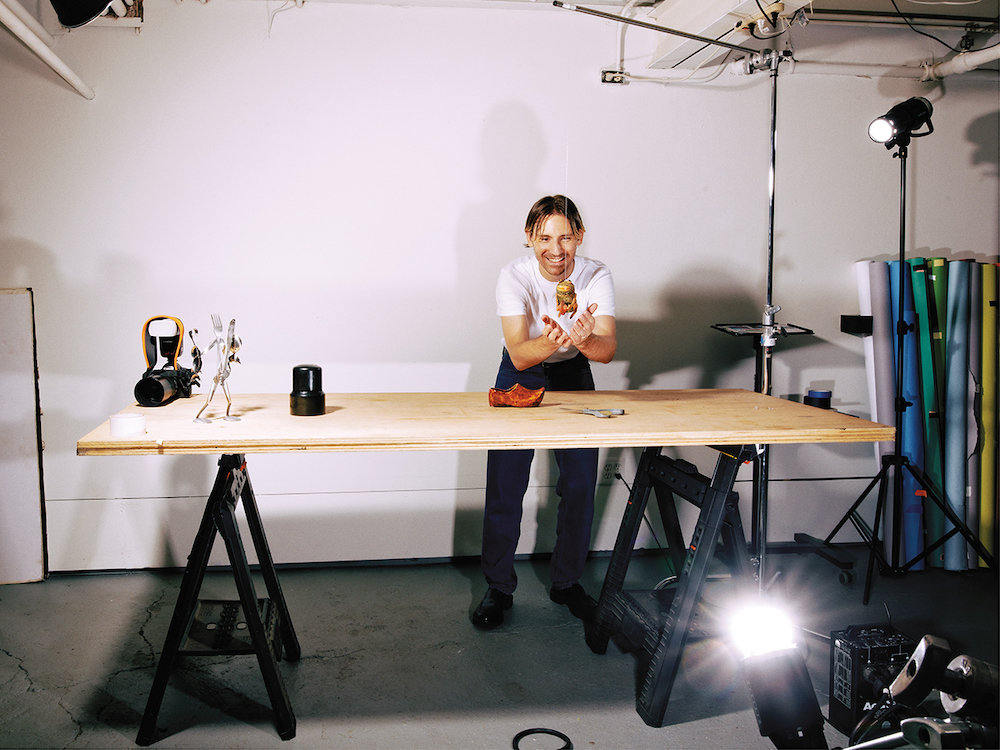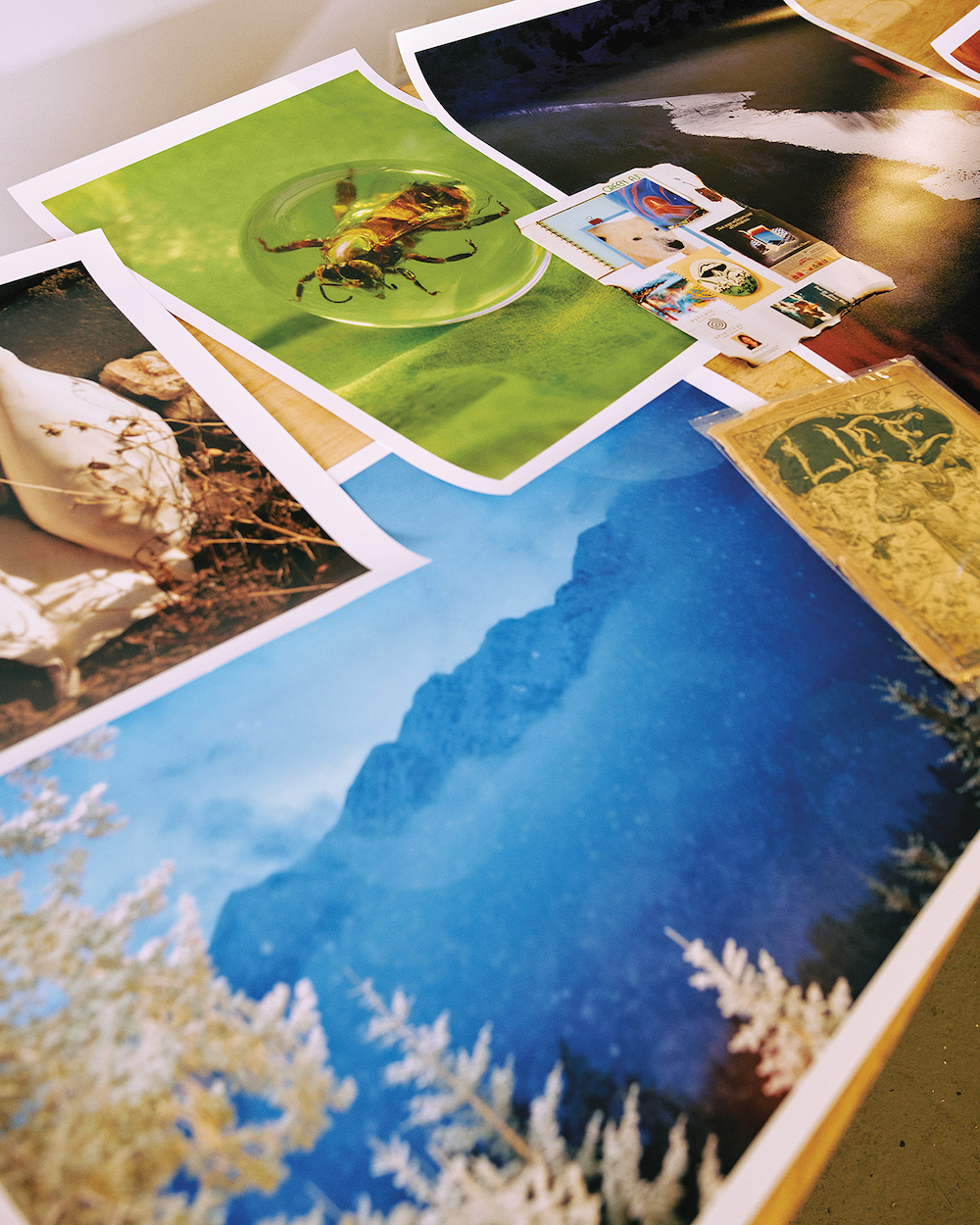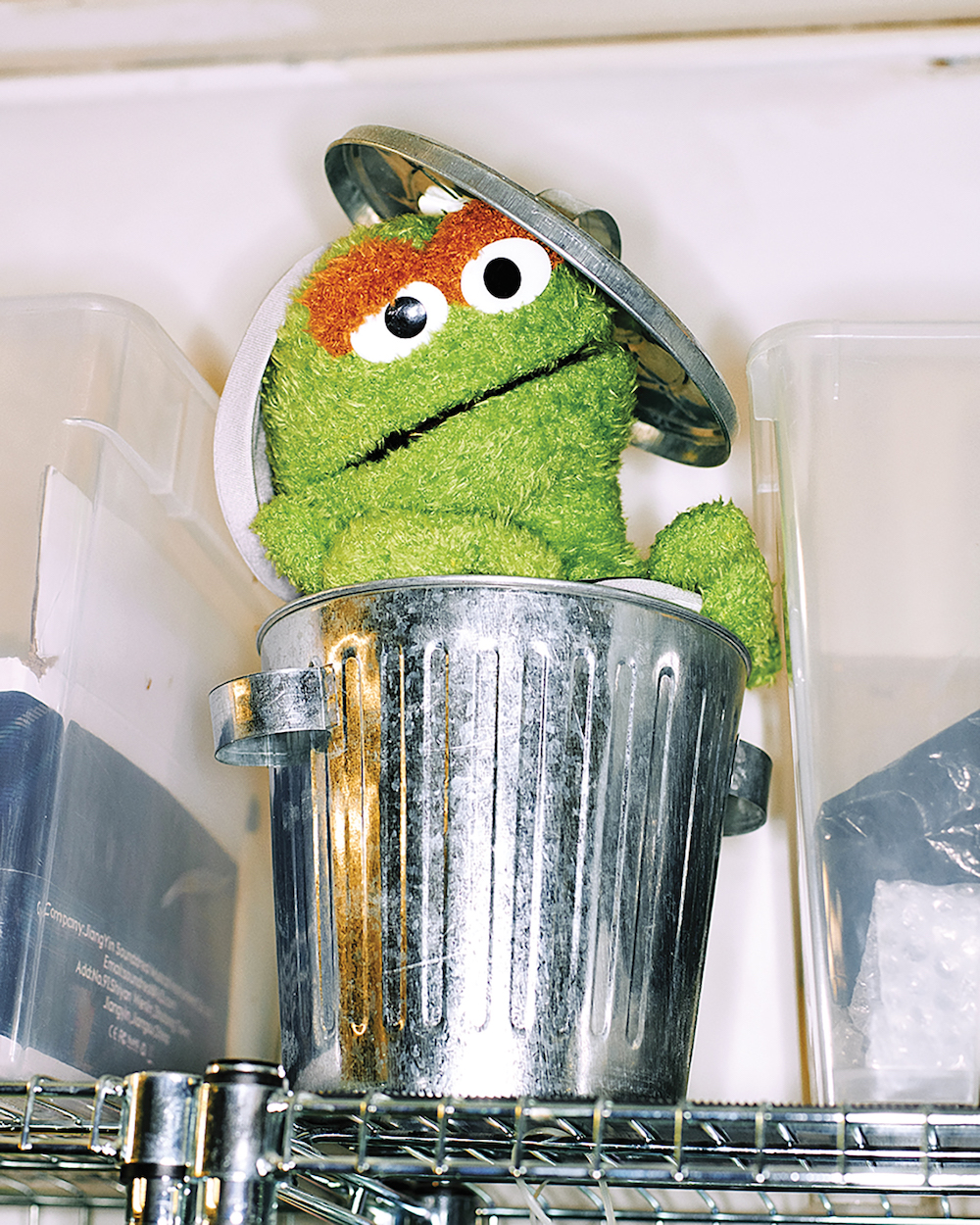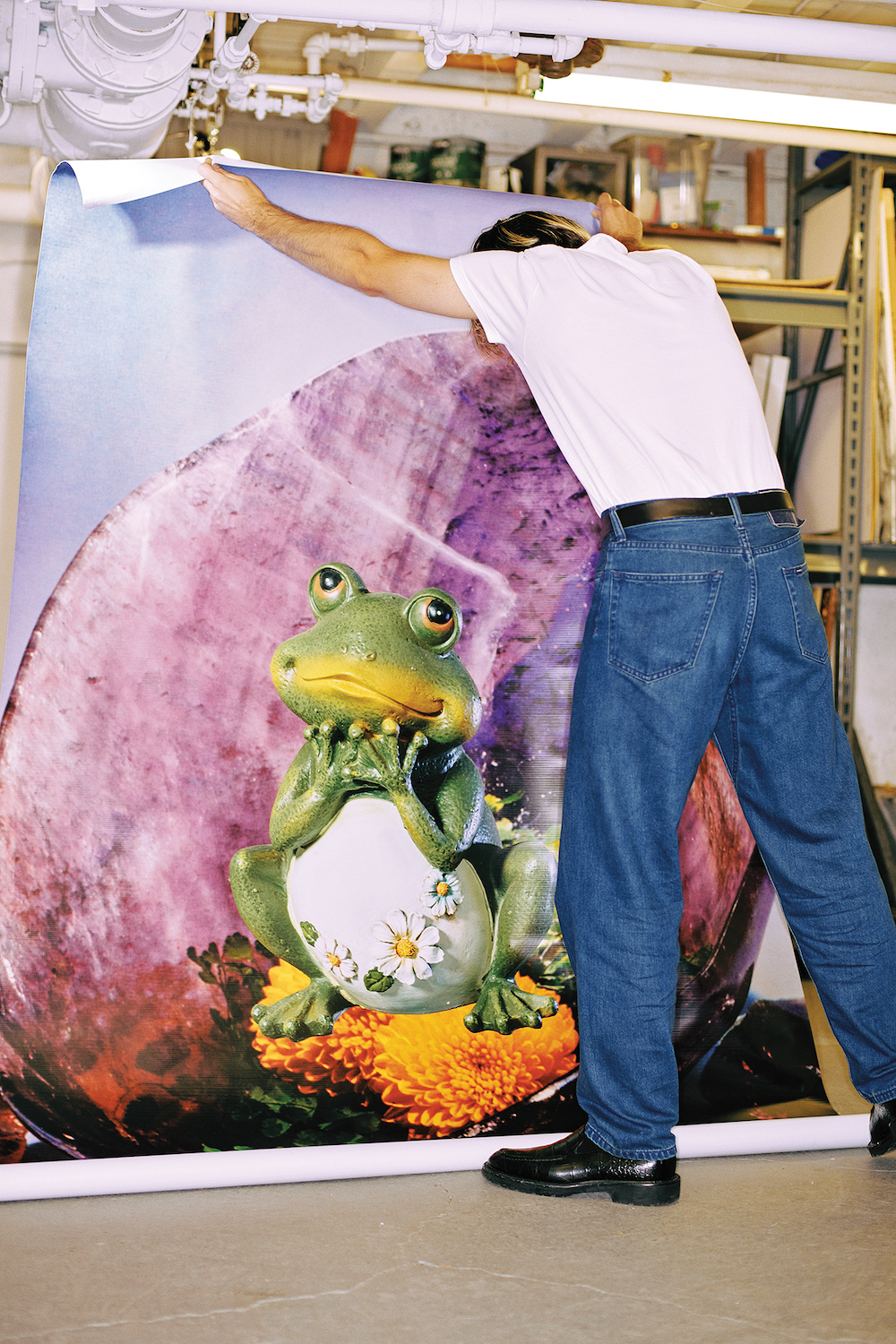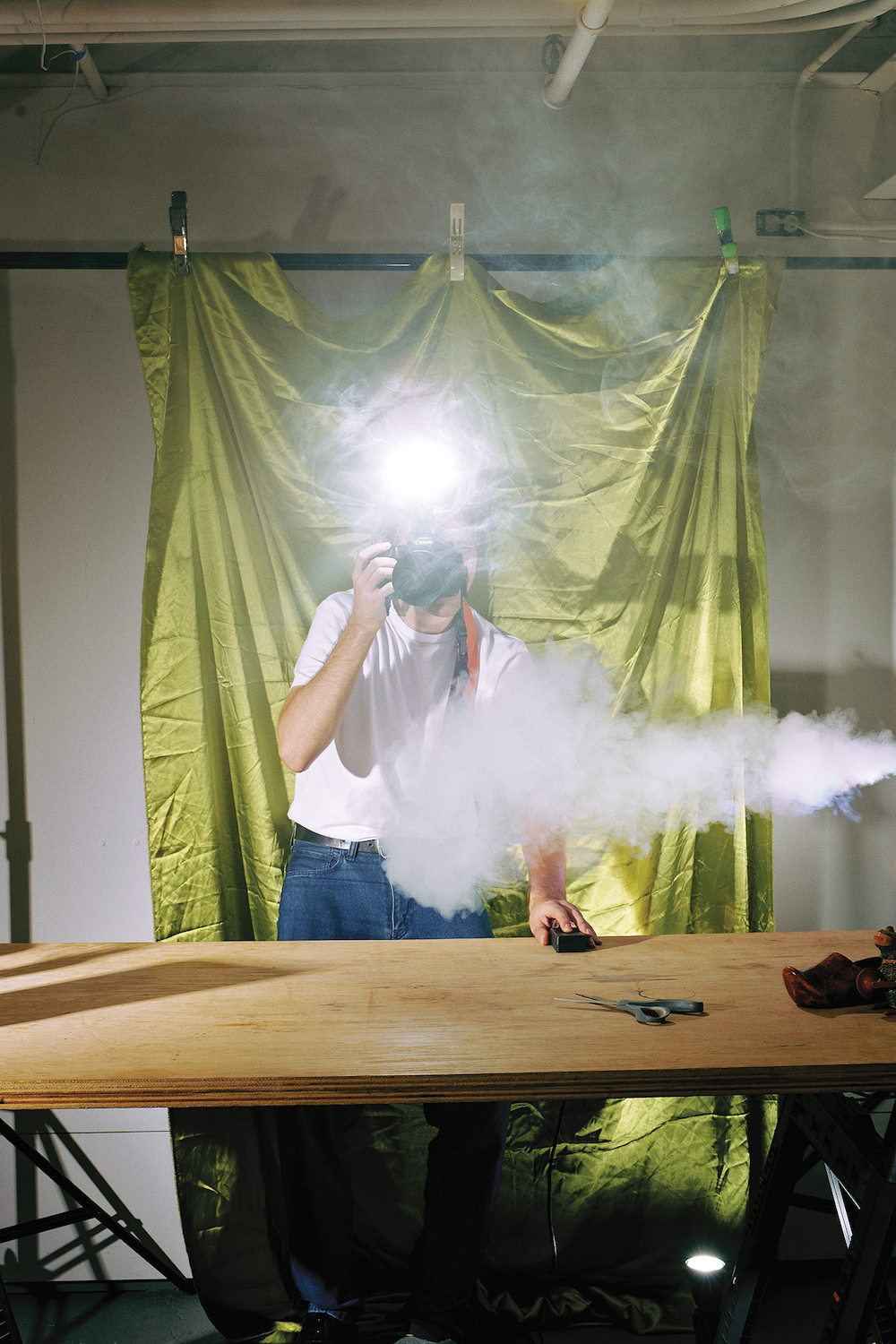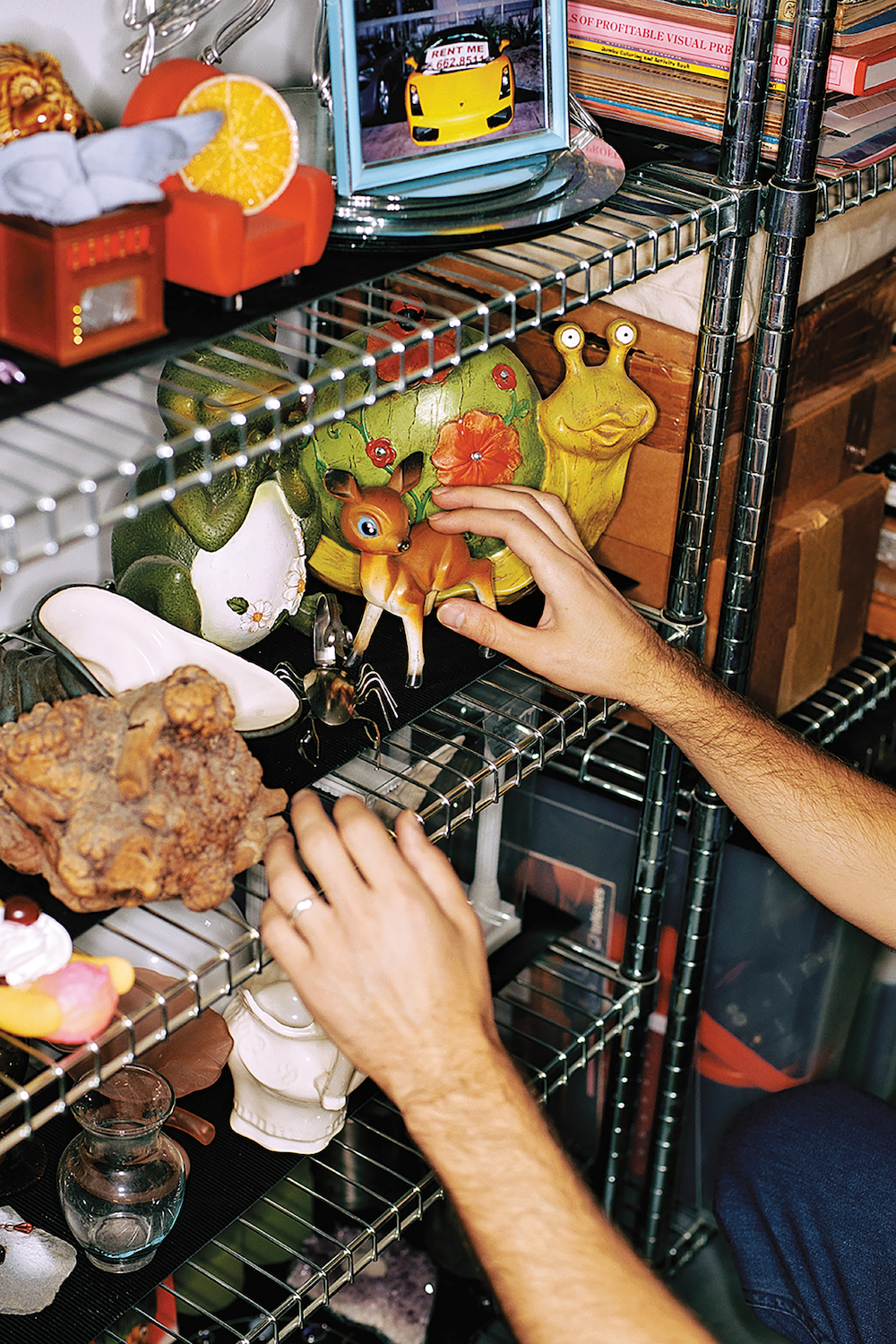This article is printed in the latest issue of British Journal of Photography magazine: Tradition & Identity. Available to purchase at thebjpshop.com.
We visit the artist in his spacious Brooklyn studio, a place where he conjures up playful compositions away from the real world
Each morning at 10am, David Brandon Geeting wakes up to an alarm labelled: What a beautiful day 🌞. Usually, he doesn’t get up right away, but he intends to. The problem, he says, is that he is most energised at night: a time when no one can bother him and he can immerse himself in pictures. When he does eventually get up, he makes a smoothie of frozen fruits, nut milks and healthy powders: a staple of the modern man.
Geeting works in Greenpoint, a trendy neighbourhood in Brooklyn, New York. The Pennsylvania-born artist has had a studio there since 2014, before the influx of tourists and condo high-rises. The building is stereotypically industrial – a former glass factory on the waterfront (but not a cute waterfront, the kind you worry might carry diseases). Situated along a cobblestone path, through a dark tunnel and past a few unassuming doors, the space is dark with low ceilings and no windows. It’s not glamorous, but it is 130 square metres in size – about half a tennis court.
Geeting’s practice exists between this studio and the real world, whether it’s reinventing inanimate objects through playful compositions, or photographing trash on his daily walks. His commercial commissions include brands like Gucci, Marc Jacobs and Nike, and he has shot editorials for publications such as The New York Times Magazine, Vogue and Time. His personal work has been exhibited in solo shows in New York and London – the ongoing project The Marble is currently on show at 10 14 Gallery in Dalston, London, until 09 September – and he has published several photobooks, including Infinite Power (2015), Amusement Park (2017) and Neighborhood Stroll (2019).
His current cavernous space isn’t Geeting’s first studio. The 33-year-old moved from his hometown in Bethlehem, Pennsylvania, in 2007 to study at the School of Visual Arts, New York – “The Big Apple!” he says, impersonating a thick New York accent. After graduating, he rented a smaller space in Bushwick (a neighbourhood south of Greenpoint). “I remember shooting a lookbook in there, and I literally had to be out the door and across the hall to get the model’s full body in the frame,” he recalls.
Although it was small, this initial space was instrumental in his development as an artist because it allowed for experimentation that was not possible at home. It wasn’t just the delineation of space either, but what surrounded it. They had a good selection of objects at Bushwick’s dollar stores. With minimal financial investment, he could source bits of junk and paraphernalia, make some fun shapes, and post it to Tumblr – a platform through which he nurtured a burgeoning following.
“I felt like if I had a studio, I could make work that was more challenging. Messier, in every sense of the word”
David Brandon Geeting
His work caught the eye of photo editors, and Geeting quickly grew out of the space. He realised he could make increased income somewhere larger: more room allowed for more chaos. “It’s the same thing that happens when I go to a restaurant and the menu is too big,” he says. “I end up ordering the worst combinations of food.”
Unlike most people, Geeting does not feel paralysed by choice. Instead, he throws all the spices into the pot. “I’m not someone that likes to make a huge mess, especially at home, which is funny because my work is very messy,” he says. “I felt like if I had a studio, I could make work that was more challenging. Messier, in every sense of the word.”
In his new windowless studio, Geeting needed to mimic the sun. He began adapting skills learned in his commercial career to his art practice. “It was a series of experimental bursts. I was trying out different magic tricks,” he says. The images, published in Amusement Park, are bright and poppy, as though they were taken near a pool at high noon. “If somebody asks me how I took a photo, I’ll normally tell them because I know they’ll never be able to make it the same way,” he says. “They could have the same idea, but it would hit different.”
Geeting wants to feel like he has captured something forbidden. Something only he has access to. Indeed, Geeting’s vibrant and surreal compositions have set a trend in the realms of still life and product photography. But the artist does not think of himself as a leader – or a follower. “I want to be doing my own weird thing that no one wants to do,” he says. For example, he will use a $40 speedlight taped in bubble wrap, and be excited by the idea that no one will know how he did it. Each body of work he creates rebels against the former. The studio, the real world, the studio, and so on.
“There is something of a back-and-forth going on, which feels like something of a necessity for me to maintain some kind of balance in my practice,” he says. He conceptualises all of his projects as books initially. And often gets ahead of himself. He’ll think, ‘This is going to be the second spread in the book,’ even though he has only made 10 per cent of the work. Thinking of how it will live in the real world is what propels him forward. “With most of my work, I’m concerned first and foremost with aesthetics, and the concept is always born out of the process of me making the work.”
Geeting’s latest project, The Marble, is more meditative and slower than anything he has made before. There is a maturity in the way he speaks about it. He researches the props beforehand and does not go to the studio unless he already has an idea. He lays out the images in Photoshop before he even begins to photograph them. “The experimentation goes on in my brain beforehand,” he confirms.
Only about one-third of the images in The Marble were taken in the studio. “The outside [photographs] feel how the studio used to feel. I don’t know what I’m going to get. Most of the photographs in The Marble are about keeping an open mind. Not getting lucky, but getting blessed.” The objects are sourced from Etsy, vintage stores, and upstate NY thrift shops. He is looking for props that represent some kind of human connection to nature. “Things that [people] put in their front lawn that express their love for the world, so much so that they make cartoon versions of them.” These objects line his studio shelves, as though he is hosting his own garage sale.
There is something sentimental about the way he speaks about them. Geeting remembers how as a kid, laying on his bed, listening to the sounds beyond his bedroom – parents arguing, birds singing, the television buzzing – he felt a psychic connection with the objects in his room. He would stare at them, believing that they were staring back. A divine understanding between glances. At this moment, he appears to get embarrassed and says he was probably just spacing out.
Geeting and I have been close friends for seven years (in the real world, I call him Dave). He can be evangelical; our friendship group jokes that he was a pastor in a former life. He loves astrology. In college, a girl told him he was a Pisces: “I Googled what that meant, and never felt as understood as I did in that moment in my entire life.” Suddenly, he was able to embrace everything he thought was bad about himself. It is how he organises his community, friendships and enemies. One day, Dave showed me a prop and said that I would like it because I am a Gemini. If he asks for your star sign, it means he likes you. If he remembers it, you can call him Dave too.
The Marble by David Brandon Geeting is open by appointment at 10 14 Gallery in Dalston until 09 September 2022. Contact info@1014.gallery to book.

